Perilipin 5-Driven Lipid Droplet Accumulation in Skeletal Muscle Stimulates the Expression of Fibroblast Growth Factor 21
- PMID: 25829453
- PMCID: PMC4512215
- DOI: 10.2337/db14-1035
Perilipin 5-Driven Lipid Droplet Accumulation in Skeletal Muscle Stimulates the Expression of Fibroblast Growth Factor 21
Abstract
Perilipin 5 (PLIN5) is a lipid droplet protein and is highly expressed in oxidative tissue. Expression of the PLIN5 gene is regulated by peroxisome proliferator-activated receptor-α, fasting, and exercise. However, the effect of increased muscle PLIN5 expression on whole-body energy homeostasis remains unclear. To examine this, we developed a mouse line with skeletal muscle PLIN5 overexpression (MCK-Plin5). We show that MCK-Plin5 mice have increased energy metabolism and accumulate more intramyocellular triacylglycerol but have normal glucose and insulin tolerance. MCK-Plin5 mice fed high-fat chow manifest lower expression of inflammatory markers in their liver and increased expression of "browning" factors in adipose tissue. This muscle-driven phenotype is, at least in part, mediated by myokines; the MCK-Plin5 mice have 80-fold higher FGF21 gene expression in muscle and increased serum FGF21 concentration. The increase in FGF21 occurs mainly in muscles with a predominance of fast-twitch fibers, suggesting that fiber type-specific lipid storage may be part of the mechanism conferring metabolic protection in MCK-Plin5 mice. In conclusion, upregulating the PLIN5 level in skeletal muscle drives expression of the FGF21 gene in fast-twitch fibers and is metabolically protective. These findings provide insight into the physiology of PLIN5 and the potential contribution of its upregulation during exercise.
© 2015 by the American Diabetes Association. Readers may use this article as long as the work is properly cited, the use is educational and not for profit, and the work is not altered.
Figures
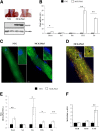
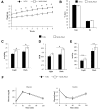
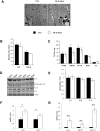
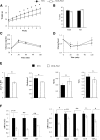
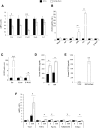
Comment in
-
Metabolism: The lipid-droplet-coating protein perilipin-5 in fast-twitch muscle fibres confers metabolic protection.Nat Rev Endocrinol. 2015 Jun;11(6):316. doi: 10.1038/nrendo.2015.61. Epub 2015 Apr 21. Nat Rev Endocrinol. 2015. PMID: 25895680 No abstract available.
Similar articles
-
Perilipin 5 Deletion Unmasks an Endoplasmic Reticulum Stress-Fibroblast Growth Factor 21 Axis in Skeletal Muscle.Diabetes. 2018 Apr;67(4):594-606. doi: 10.2337/db17-0923. Epub 2018 Jan 29. Diabetes. 2018. PMID: 29378767
-
Overexpression of PLIN5 in skeletal muscle promotes oxidative gene expression and intramyocellular lipid content without compromising insulin sensitivity.Biochim Biophys Acta. 2013 Apr;1831(4):844-52. doi: 10.1016/j.bbalip.2013.01.007. Epub 2013 Jan 22. Biochim Biophys Acta. 2013. PMID: 23353597
-
Liver Perilipin 5 Expression Worsens Hepatosteatosis But Not Insulin Resistance in High Fat-Fed Mice.Mol Endocrinol. 2015 Oct;29(10):1414-25. doi: 10.1210/me.2015-1069. Epub 2015 Aug 21. Mol Endocrinol. 2015. PMID: 26296152 Free PMC article.
-
Perilipin 5, a lipid droplet protein adapted to mitochondrial energy utilization.Curr Opin Lipidol. 2014 Apr;25(2):110-7. doi: 10.1097/MOL.0000000000000057. Curr Opin Lipidol. 2014. PMID: 24535284 Free PMC article. Review.
-
Unraveling the roles of PLIN5: linking cell biology to physiology.Trends Endocrinol Metab. 2015 Mar;26(3):144-52. doi: 10.1016/j.tem.2015.01.005. Epub 2015 Feb 11. Trends Endocrinol Metab. 2015. PMID: 25682370 Review.
Cited by
-
Fibroblast Growth Factor 21 and the Adaptive Response to Nutritional Challenges.Int J Mol Sci. 2019 Sep 21;20(19):4692. doi: 10.3390/ijms20194692. Int J Mol Sci. 2019. PMID: 31546675 Free PMC article. Review.
-
Skeletal Muscle and Bone - Emerging Targets of Fibroblast Growth Factor-21.Front Physiol. 2021 Mar 8;12:625287. doi: 10.3389/fphys.2021.625287. eCollection 2021. Front Physiol. 2021. PMID: 33762965 Free PMC article. Review.
-
Homeostatic sensing of dietary protein restriction: A case for FGF21.Front Neuroendocrinol. 2018 Oct;51:125-131. doi: 10.1016/j.yfrne.2018.06.002. Epub 2018 Jun 8. Front Neuroendocrinol. 2018. PMID: 29890191 Free PMC article. Review.
-
Muscle Lipid Metabolism: Role of Lipid Droplets and Perilipins.J Diabetes Res. 2017;2017:1789395. doi: 10.1155/2017/1789395. Epub 2017 Jun 6. J Diabetes Res. 2017. PMID: 28676863 Free PMC article. Review.
-
Perilipin 5 fine-tunes lipid oxidation to metabolic demand and protects against lipotoxicity in skeletal muscle.Sci Rep. 2016 Dec 6;6:38310. doi: 10.1038/srep38310. Sci Rep. 2016. PMID: 27922115 Free PMC article.
References
-
- Bucci M, Borra R, Någren K, et al. . Human obesity is characterized by defective fat storage and enhanced muscle fatty acid oxidation, and trimetazidine gradually counteracts these abnormalities. Am J Physiol Endocrinol Metab 2011;301:E105–E112 - PubMed
-
- Borén J, Taskinen MR, Olofsson SO, Levin M. Ectopic lipid storage and insulin resistance: a harmful relationship. J Intern Med 2013;274:25–40 - PubMed
Publication types
MeSH terms
Substances
Grants and funding
LinkOut - more resources
Full Text Sources
Other Literature Sources
Molecular Biology Databases

